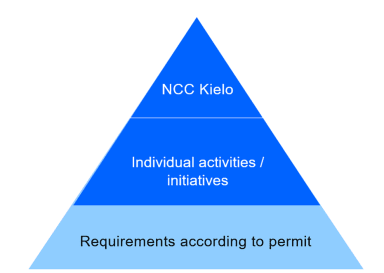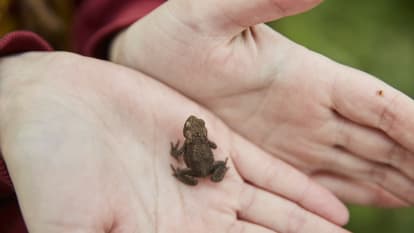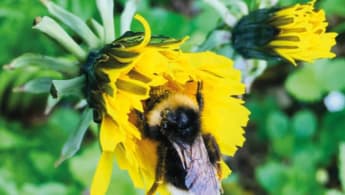How we protect biodiversity at our gravel pits and quarries
Every time we open a gravel pit or quarry, there is an environmental impact. This means that we also have a responsibility to make conscious choices to protect the biodiversity that exists there. It is important work where we see that we can make a difference.
All our operations are based on permits, which include a comprehensive review of the intended activities and, among other things, an environmental impact assessment (EIA). But we strive to do more than that.
Our goal is to have increased biodiversity in all gravel pits and quarries where we operate by 2030 at the latest. We do this by continuing to seek knowledge in the field and further integrating biodiversity efforts into our business processes and the way we work at our quarries.
Why is it important to protect biodiversity?
Biodiversity is all the variety of life that exists on earth – both between different species, within species, and between different types of habitats. Biodiversity is important for nature to function, for us to continue to have food and other resources, and for us to be able to enjoy a rich and vibrant natural environment in the future.
Three steps to enhance biodiversity
The measures we take to enhance biodiversity differ from site to site. What all gravel pits and quarries have in common are the actions we take that are directly linked to and regulated by our permits and other legal requirements. After that, there are individual activities and initiatives depending on which animal and plant species are present at each site (see examples below). Finally, we have our most comprehensive action plan – NCC Kielo.

1. NCC Kielo – our most comprehensive action plan
At the top of the pyramid is our most comprehensive action plan for biodiversity – NCC Kielo. For a gravel pit or quarry to become an NCC Kielo site, several measures over time are required to enhance biodiversity.
2. Strengthening initiatives that increase biodiversity
In the middle of the pyramid, we have a variety of other initiatives that create good environments for, among others, birds, insects, or flowers at our gravel pits and quarries. Here you can read some of our initiatives in the Nordic countries.
3. Basic requirements for operating a gravel and rock quarry
At the base of the pyramid are statutory permits, which include the environmental impact assessment (EIA) that all companies must conduct before opening a new gravel pit or quarry. Some of the activities we carry out at our gravel pits and quarries to increase biodiversity are directly linked to and regulated by our permits and other legal requirements.
Biodiversity at all our sites
It is not only at our gravel pits and quarries that we work to promote biodiversity. At our terminals, landfills, and storage sites, various initiatives are also taken that make a difference. For example, this can include gathering dead wood in a pile for insect habitats or sowing flower seeds on a slope to help bees and insects find nectar.




